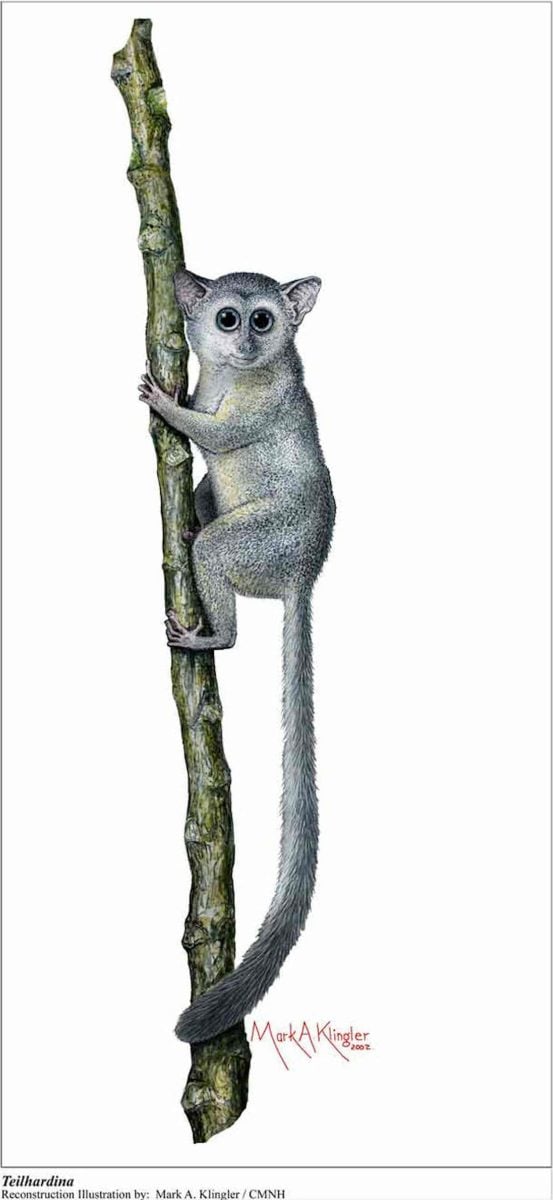
Primates originated in cold environments, not the tropics. Their past adaptations reveal insights for conservation today.
Many people picture our earliest primate ancestors moving through dense tropical forests, yet new evidence suggests they actually endured cold environments.
As an ecologist who has spent years studying chimpanzees in Uganda and lemurs in Madagascar, I am deeply interested in the habitats that influenced our evolutionary history. These discoveries challenge long-held ideas about when and where our lineage first developed.
Understanding the origins of human evolution is central to understanding ourselves. The same environmental pressures that shaped our ancestors continue to shape us today and will influence our future as well.
Climate as a driver of evolution
Climate has always played a critical role in determining which species thrive, which adapt, and which vanish. With global temperatures rising, insights from the past are more valuable than ever.
A recent study led by Jorge Avaria-Llautureo at the University of Reading, along with colleagues, examined the geographic origins of primates and the climates of those ancient regions. The findings were unexpected: instead of emerging in warm, tropical habitats as previously assumed, the earliest primates appear to have lived in cold, arid environments.

These environmental challenges are likely to have been crucial in pushing our ancestors to adapt, evolve and spread to other regions. It took millions of years before primates colonized the tropics, the study shows. Warmer global temperatures don’t seem to have sped up the spread or evolution of primates into new species. However, rapid changes between dry and wet climates did drive evolutionary change.
Earliest primates and their traits
One of the earliest known primates was Teilhardina, a tiny tree dweller weighing just 28 grams – similar to the smallest primate alive today, Madame Berthae’s mouse lemur. Being so small, Teilhardina had to have a high-calorie diet of fruit, gum and insects.
Fossils suggest Teilhardina differed from other mammals of the time as it had fingernails rather than claws, which helped it grasp branches and handle food – a key characteristic of primates to this day. Teilhardina appeared around 56 million years ago (about 10 million years after the extinction of the dinosaurs) and species dispersed rapidly from their origin in North America across Europe and China.
It is easy to see why scientists had assumed primates evolved in warm and wet climates. Most primates today live in the tropics, and most primate fossils have been unearthed there too.
Cold origins and surprising habitats
But when the scientists behind the new study used fossil spore and pollen data from early primate fossil environs to predict the climate, they discovered that the locations were not tropical at the time. Primates actually originated in North America (again, going against what scientists had once believed, partly as there are no primates in North America today).

Some primates even colonized Arctic regions. These early primates may have survived seasonally cold temperatures and a consequent lack of food by living much like species of mouse lemur and dwarf lemur do today: by slowing down their metabolism and even hibernating.
Challenging and changeable conditions are likely to have favored primates that moved around a lot in search of food and better habitat. The primate species that are with us today are descended from these highly mobile ancestors. Those less able to move didn’t leave any descendants alive today.
Lessons for conservation today
The study demonstrates the value of studying extinct animals and the environment they lived in. If we are to conserve primate species today, we need to know how they are threatened and how they will react to those threats. Understanding the evolutionary response to climate change is crucial to conserving the world’s primates, and other species beyond.
When their habitats are lost, often through deforestation, primates are prevented from moving freely. With smaller populations, restricted to smaller and less diverse areas, today’s primates lack the genetic diversity to adapt to changing environments.
But we need more than knowledge and understanding to save the world’s primate species, we need political action and individual behavior change, to tackle bushmeat consumption – the main reason primates are hunted by humans – and reverse habitat loss and climate change. Otherwise, all primates are at risk of extinction, ourselves included.
Reference: “The radiation and geographic expansion of primates through diverse climates” by Jorge Avaria-Llautureo, Thomas A. Püschel, Andrew Meade, Joanna Baker, Samuel L. Nicholson and Chris Venditti, 5 August 2025, Proceedings of the National Academy of Sciences.
DOI: 10.1073/pnas.2423833122
Written by Jason Gilchrist, Lecturer in the School of Applied Sciences, Edinburgh Napier University.
Lecturer in the School of Applied Sciences, Edinburgh Napier University
Adapted from an article originally published in The Conversation.![]()
Never miss a breakthrough: Join the SciTechDaily newsletter.
3 Comments
Well, then, not Africa nor China. Maybe the Native Americans had it right, the original Gods were white men called Whagei (wah-gay), who, after the humans got uppity and killed one, went away.
Maybe down to China – where Asians are really related to Native Americans not the other way around.
Africans were escaped Chinese slaves who got sun burned.
“ Primates actually originated in North America (again, going against what scientists had once believed, partly as there are no primates in North America today).”
No primates in North America today, 😳 what about the ~400 million Homo sapiens, which are also primates. The article linked to says “no monkeys in North America”. GET A BETTER AI SYSTEM.
There are no myths in science. Try postulates and theories.